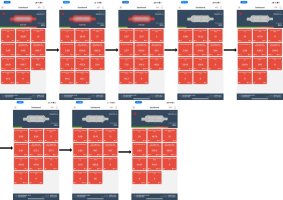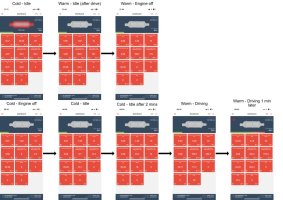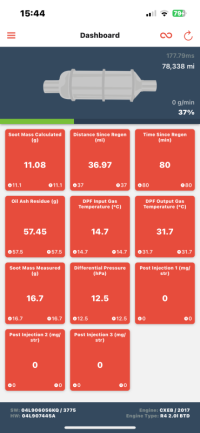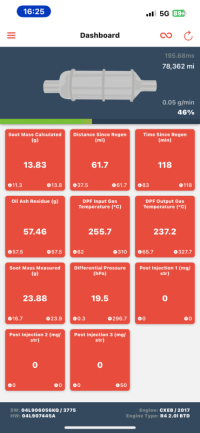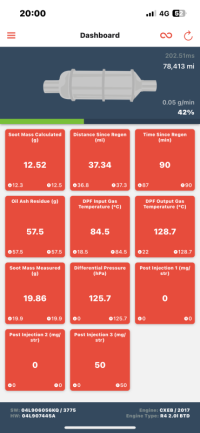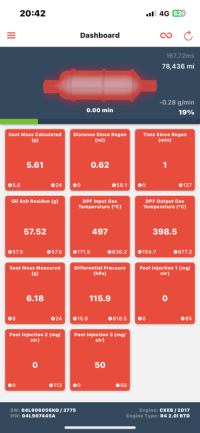Re high hPa, I looked at the max differential pressure on the drive in this morning, if you give it full throttle underway it goes all the way up to 999 hPa, i've no idea if that is normal.
Perhaps the app just maxed out - couldn't show 4 digits? Anyways, not easy to compare max values not knowing all the affecting factors: e.g. engine revs, actual engine load (vehicle speed), intake air flow, fuel flow, EGR position, exhaust temperature. Thus the request about more controlled test points (idle).
Probably not a good comparison but the highest pressure across the DPF I have recorded is "only" 400 hPa (mbar) accelerating from 3800 rpm/70 mph uphill, guzzling at the moment 54 litres/hour, exhaust gases at 650 °C, EGR closed, etc.
The DPF was taken off and cleaned out by the local garage at 153,620 miles, so about 3500 miles ago,
Please see attached new screen shots as suggested in your post.
Well, the results are not what I would expect to see from a clean DPF. E.g. the cold DPF right after DPF regeneration
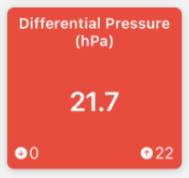
I would expect to see something like 5 hPa - that's what mine does when cold (though have only 50000 miles). However, we don't know how the app processes the data (which PID, scaling, offset) - so are the readings accurate.
Anyways, the behaviour of soot values - calculated vs. measured suggests that ECU gets confused. Normally the soot calculated and soot measured go in sync without any sudden jumps.
Presumably the measured soot is based on measured pressure difference across the DPF and whenever the pressure gets "too high" the ECU forces DPF regeneration (by altering the "soot calculated" to trigger the DPF regen - hence the jump. The same can be seen when doing a forced regen - the "soot calculated" is set to trigger the regen.
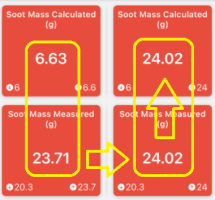
Observed normal values for your engine are:
Soot calculated from approx. 5-6 grams to 24 grams (DPF regeneration trigger point)
Soot calculated from approx. -6 grams up to 5 grams.
(1) Verify the DPF differential pressure sensor. There was a recall to renew the sensor on 2016 vans.
I'm fairly confident it's the high DPF differential pressure reading which leads to almost continuous DPF regenerations - however, is it the sensor or the DPF itself at fault is not clear
(2) Worst case scenario is that high oil consumption expedites DPF clogging
Since i've owned it, it's been using about 1 litre per 1000 miles (I understand VW say anything less than 1L per 600 miles is 'normal').
Re the oil consumption check this please
Hi, long time reader first time poster here. I am finally getting my engine swapped under warranty from VW. Engine is ordered (paid for by VW) and hopefully installed within the next week or two. Question is, what else is worth swapping / upgrading whilst the block is out and easy to access...

www.t6forum.com

